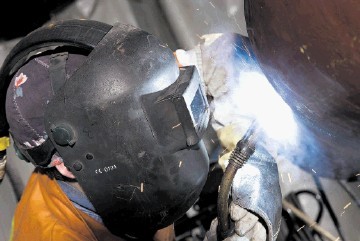
A multi-disciplinary engineering team at the University of California, San Diego, have developed a new nanoparticle-based material for concentrating solar power plants designed to absorb and convert to heat more than 90% of the sunlight it captures.
It is said the new material can also withstand temperatures greater than 700C and survive many years outdoors in spite of exposure to air and humidity.
By contrast, current solar absorber material functions at lower temperatures and needs to be overhauled almost every year for high temperature operations.
“We wanted to create a material that absorbs sunlight that doesn’t let any of it escape. We want the black hole of sunlight,” says Sungho Jin, a professor in the department of Mechanical and Aerospace Engineering at UC San Diego Jacobs School of Engineering.
Jin, along with Professor Zhaowei Liu of the department of Electrical and Computer Engineering, and Mechanical Engineering Professor Renkun Chen, developed the Silicon boride-coated nanoshell material.
They are all experts in functional materials engineering.
The novel material features a “multiscale” surface created by using particles of many sizes ranging from 10 nanometers to 10 micrometers. The multi-scale structures can trap and absorb light which contributes to the material’s high efficiency when operated at higher temperatures.
Current CSP plants are shut down about once a year to chip off the degraded sunlight absorbing material and reapply a new coating, which means no power generation while a replacement coating is applied and cured.
That is why the US DOE’s SunShot programme challenged and supported UC San Diego research teams to come up with a material with a substantially longer life cycle, in addition to the higher operating temperature for enhanced energy conversion efficiency.
Concentrating solar power (CSP) is an emerging alternative clean energy market that currently delivers about 3.5 gigawatts worth of power at power plants around the globe – enough to power more than 2million homes, with additional construction in progress to provide as much as 20GW of power in coming years.
One of the technology’s attractions is that it can be used to retrofit existing power plants that use coal or fossil fuels because it uses the same process to generate electricity from steam.
Traditional power plants burn coal or fossil fuels to create heat that evaporates water into steam. The steam turns a giant turbine that generates electricity from spinning magnets and conductor wire coils.
CSP power plants create the steam needed to turn the turbine by using sunlight to heat molten salt. The molten salt can also be stored in thermal storage tanks overnight where it can continue to generate steam and electricity, 24 hours a day if desired, a significant advantage over photovoltaic systems that stop producing energy with the sunset.
One of the most common types of CSP systems uses more than 100,000 reflective mirrors to aim sunlight at a tower that has been spray painted with a light absorbing black paint material.
The material is designed to maximise sun light absorption and minimise the loss of light that would naturally emit from the surface in the form of infrared radiation.
European interest in CSP is reviving after some 10 years of little activity, notably due to a favourable supporting framework in Spain and increasing investments in the US.
Three main CSP technologies are under development: trough, tower/central and dish. CSP technologies are only now at the stage of first commercial deployment for power production in Europe.